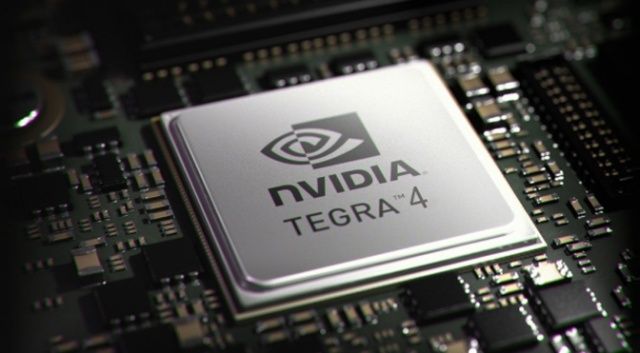NVIDIA Announces Tegra 4 With Quad-Core Cortex-A15 Chip, 72-Core Graphics [CES 2013]
We got a glimpse of NVIDIA’s new Tegra 4 back in December, when a leaked slide detailing its specifications began circulating the Internet. But the company has now made the impressive chip official at CES 2013 in Las Vegas. Designed for mobile devices like smartphones and tablets, the Tegra 4 boasts a super speedy quad-core Cortex-A15 processor and 72-core graphics, making it the “world’s fastest mobile processor.”
“This thing is flooded with GPU cores,” NVIDIA CEO Jen-Hsun Huang told the press at CES.
The Tegra 4 is likely to power the next generation of high-end Android smartphones and tablets, and NVIDIA’s demonstration at CES proved that it will make a big difference. When the Tegra 4 was leaked last month, some questioned whether we really needed processors this powerful in mobile devices at this point.
But even basics like web browsing can be vastly improved. NVIDIA pitted a Nexus 10 tablet, which Huang called “the fastest tablet in the world today,” against a tablet with a Tegra 4 processor on stage at CES. Both devices were to load 25 high-traffic websites. The Tegra 4 tablet completed the task in 27 seconds, while the Nexus 10 took 50 seconds.
The processor could also improve HDR photography. Huang noted it takes around two seconds for Apple’s iPhone 5 to capture a HDR image, while the Tegra 4 can to the same thing almost instantly.
“It basically is a one-shot HDR,” he said. “Whatever you can take with one exposure, you can now take in HDR.”
Its predecessor, the Tegra 3, kickstarted our obsession with quad-core mobile devices. It’s been integrated into a wide range of high-end devices, including smartphones from HTC and LG, and tablets from Google, Asus, and Microsoft. However, Qualcomm’s Snapdragon S4 processor has been more successful.
That’s not necessarily because it’s more powerful, but because it supports LTE, and requires less power — meaning better battery life. The Tegra 4, on the other hand, is said to employ a new 28-nanometer manufacturing process that would make it significantly more efficient than the Tegra 3.
- ViaPC World



